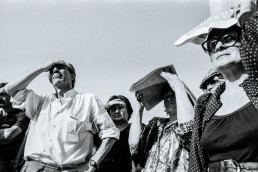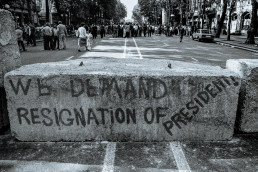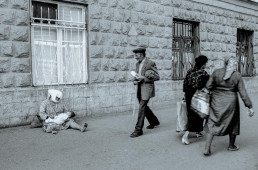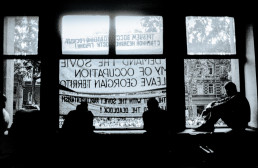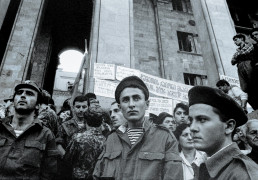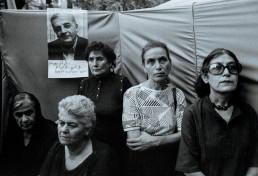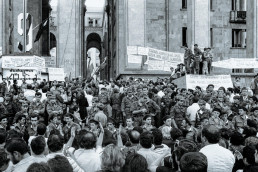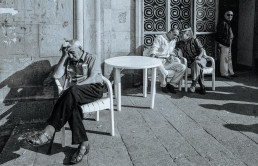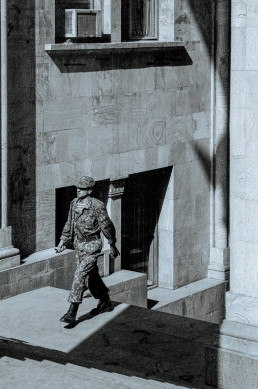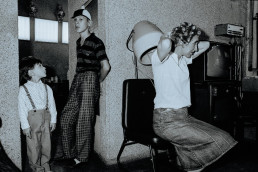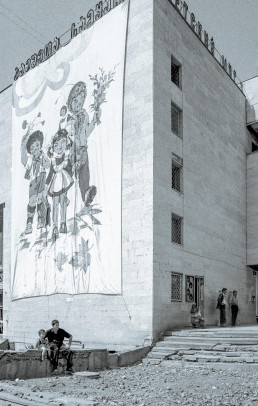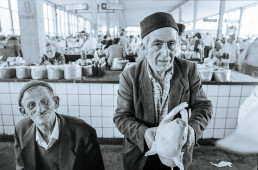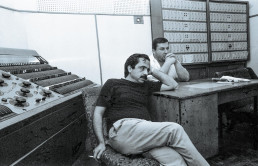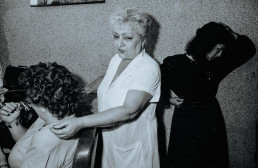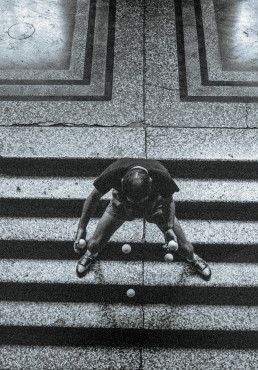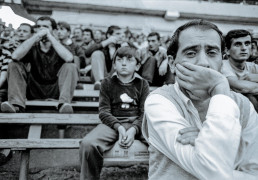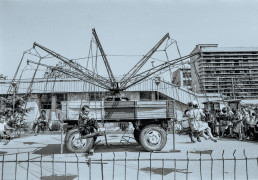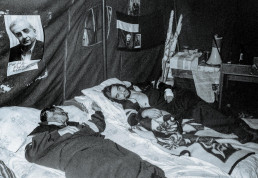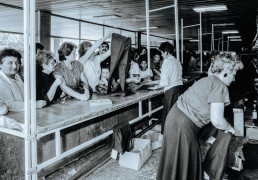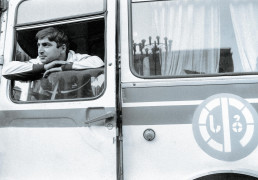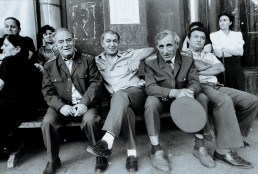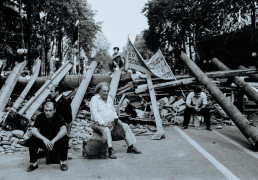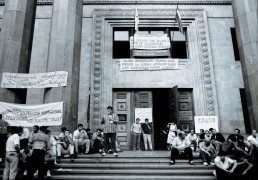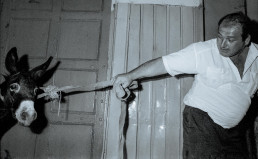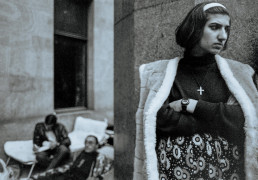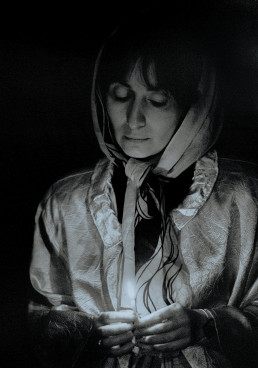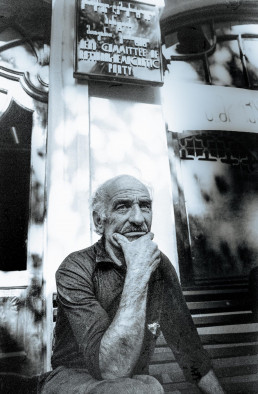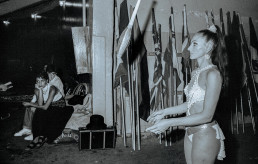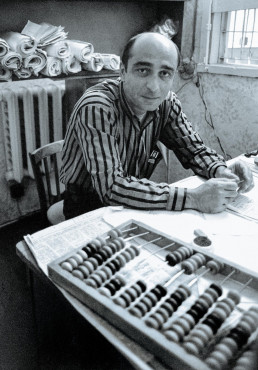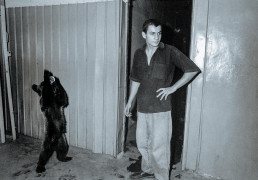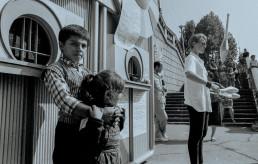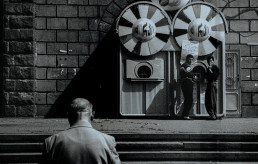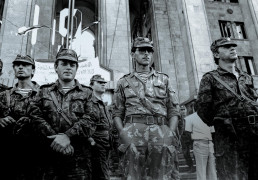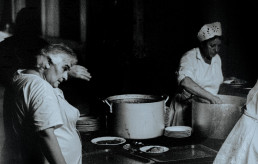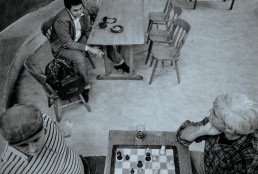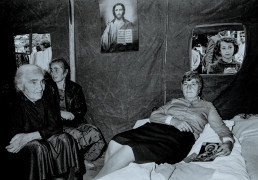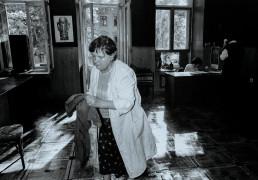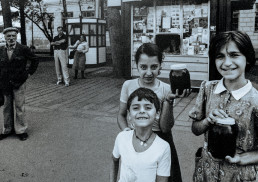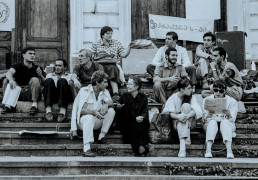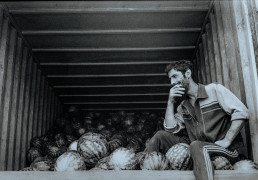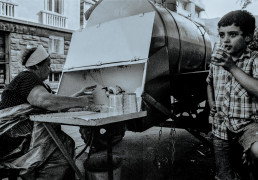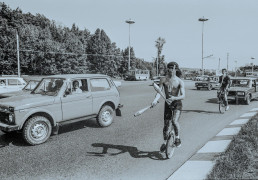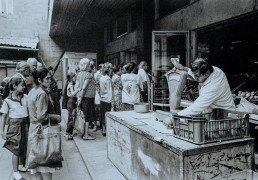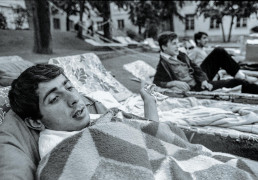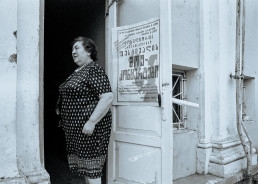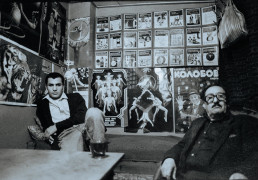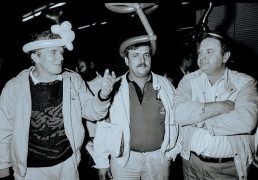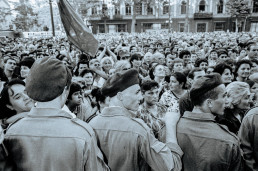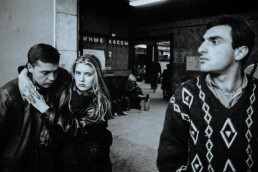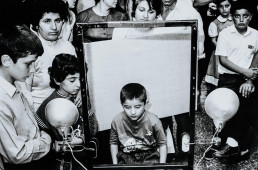
Tbilisi 1991 – Walking the line
In early September 1991, I was in Tbilisi, the capital of Georgia, a country that had only gained independence from the Soviet Union in spring that year. My ticket there was my first overseas commission for the Guardian newspaper, to cover the inaugural International Juggling Convention. Rooming with a local family, and not understanding local drinking customs, I left my apartment each morning jacked up on ice-cold vodka and weighed down by stone-solid cheese bread. One of very few members of the foreign media in the city at that time, I shot lots of black and white images of jugglers, as well as lots of Tbilisi residents – most just living their lives, but some protesting on the streets against the new government. Political tensions quickly mounted and a state of emergency was declared. After an unscheduled second week in Tbilisi, I finally managed to share the flight home with sheep and melons.
May 2024_ Press release:
The upcoming Kolga Tbilisi Photography Festival is set for opening on the 15th May 2024, 7pm at the prestigious MoMA Tbilisi. Acclaimed photographer Liam Bailey unveils a compelling exhibition featuring recently rediscovered unseen black and white street and documentary imagery captured in Tbilisi, September 1991
Liam Bailey’s lens transports viewers back to a pivotal moment in history when Zviad Gamsukhurdia clung to power as the President of Georgia. The atmospheric images vividly depict the streets of Tbilisi adorned with barricades made from builders’ rubble, broken furniture, pipes, and mangled metal, crossing Rustaveli Avenue in defiance. In front of the imposing parliament building, a horseshoe of city buses had been strategically positioned, resembling a modern-day wagon train’s defensive formation.
Liam had been on assignment for very different project, The first international juggling convention, however with a city in flux, teetering on the brink. A palpable sense of uncertainty and excitement permeates the air, as soldiers stand casually adorning the columns, chatting, not entirely sure of their roles. The visual symbols of change manifest in the form of emerging and increasingly regular protests on the capital’s streets, hastening the demise of the existing political leadership.
Due to the situation he and the rest of the traveling party were unable to leave, enabling Bailey to navigate the intricate tapestry of this historical moment, leaving viewers captivated and eager to unravel the mystery behind the scenes. The images offer a poignant reflection on the complexities of a society undergoing rapid transformation in the wake of the disintegration of the Soviet regime sitting alongside a study of the city during this time.
